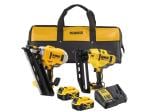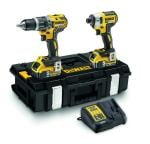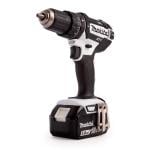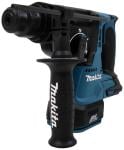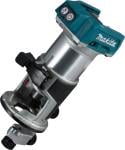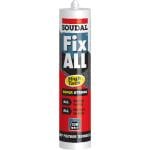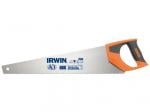Plasterboard Fixings - What To Do and What Not To Do
The purpose of this blog post is to provide you with the confidence you need to undertake the fittings and applications you want to undertake. This is especially true if you have hollow plasterboard or dryboard walls within your premises and are unsure which fixings you should be using.
Standard Plasterboard Hollow Wall Fixings
Standard hollow wall fixings are available for a very small amount of money per fixing, and can be used for hanging up picture frames, canvas paintings, as well as other small cosmetic applications such as mirrors. They are ideal for installing picture frames, canvas paintings, and many other cosmetic applications.
Heavy Duty Plasterboard Hollow Wall Fixings
The popularity of heavy duty plasterboard fixings has led the general public to believe that they are significantly more reliable than standard plasterboard fixings if they are judged solely by their name. That's not true! Many people report buckling or snapping of the screws once they insert the screw into the screw hole in the plasterboard once they insert the fitting inside the plasterboard. Thus, if you are contemplating fixing your plasterboard or dryboard to a wall, we would recommend that you steer clear and choose a longer-lasting fixing method.
Universal Wall Plugs
The universal wall plug, another cost-effective lightweight fixing, is a good alternative to standard plasterboard fixings as they provide an equally effective performance. The simplest way to install a universal plug into your plasterboard is to drill the hole in the plasterboard to the required size, insert the universal plug, and tighten the screw. Wall plugs with universal attachments are known to hold well against plasterboard and thus provide a strong, reliable connection.
Ready Driver
When you are in a hurry and do not have any power tools on hand, as well as if time is of the essence, ready driver fixings are the way to go. In order to install the initial fixing, one only needs a screwdriver, a little bit of pressure, and a screwdriver to screw directly into the plasterboard. As soon as the fixing is inserted into the plasterboard, it can be used to mount all manners of brackets onto the wall. This includes lightweight applications. Ensure that you only use a self-topping screw that fits flush and is able to provide you with a firm, reliable fix by making sure that you choose a small self-topping screw which can fit flush.
Rosett Cavity Fixings
In terms of heavy-duty fixings, there is no comparison to plastic rosett plasterboard fixings. Unlike the heavy-duty hollow wall screws we discussed earlier, the plastic rosett cavity plasterboard fixings are the real deal. As they are available for single and double skin plasterboards, they can be fitted easily and taken down without damaging the wall itself. They are designed to be used under heavy loads and can withstand heavy loads as well as being fitted and removed with ease.
Snaptoggles
Snaptoggles are widely considered to be one of the most effective and reliable plasterboard fixings, however they require a slightly larger hole to be cut to install than many other fixings - usually 12 inches in diameter. In order to install the snaptoggle, the hole must be pushed through and then the snaptoggle is pulled back into place. You can simply slide down the plastic connectors and snap off when flush with the wall. From that point forward you can simply screw it in like normal for an extremely professional finish.
Hollow Wall Anchors
It may be necessary to use a setting tool if you’re going to install into plasterboard that hasn't been skimmed, but in other cases you may not need one. There is however an advantage to the setting tool, in that it facilitates pulling back the screw and securing the anchor firmly into the wall, creating a permanent fix that can hold up to 10kg of weight.
Spring Toggles
Adding screws in place on plasterboard or dry board walls will also give you a strong and reliable wall fixing that can stand up to a considerable amount of weight, when that weight is applied. In spite of their advantages, one of the disadvantages of these is that when you unscrew any of these fixings, there is a good chance that the spring toggle will fall into the wall cavity, which means that you will only be able to use them once.
GripIt Fixings
Grip It fixings are among the most recent additions to the plasterboard fixings market, and they require relatively large openings in order to ensure they are able to be used - usually 18mm - in order for them to be effective. Use a screwdriver to turn the slot in your Grip It fixing and then tap through to tighten it with a screwdriver after putting in your Grip It fixing. It is worth noting that these are some of the strongest fixings you will find today, making them an excellent choice for attaching items of a larger size to a plasterboard or dryboard wall.
Ten of our Plasterboard fixings-related products:
- Timco Multi-Fix Stella Fixings
- Timco Zip-Fix Cavity Wall Fixings
- Timco Spring Toggles
- Timco CoreFix Dot & Dab Fixing 4 Pack
- Timco Metal Cavity Anchors
- Spit Self-Drilling Plasterboard Fixing Driva TP12 Box Of 100
- JCP M5 X 45mm Hollow Wall Anchor
- TIMco Cavity Anchor Setting Tool
- TIMco 4 x 30mm Hammer-In Plasterboard Fixings Qty 100


